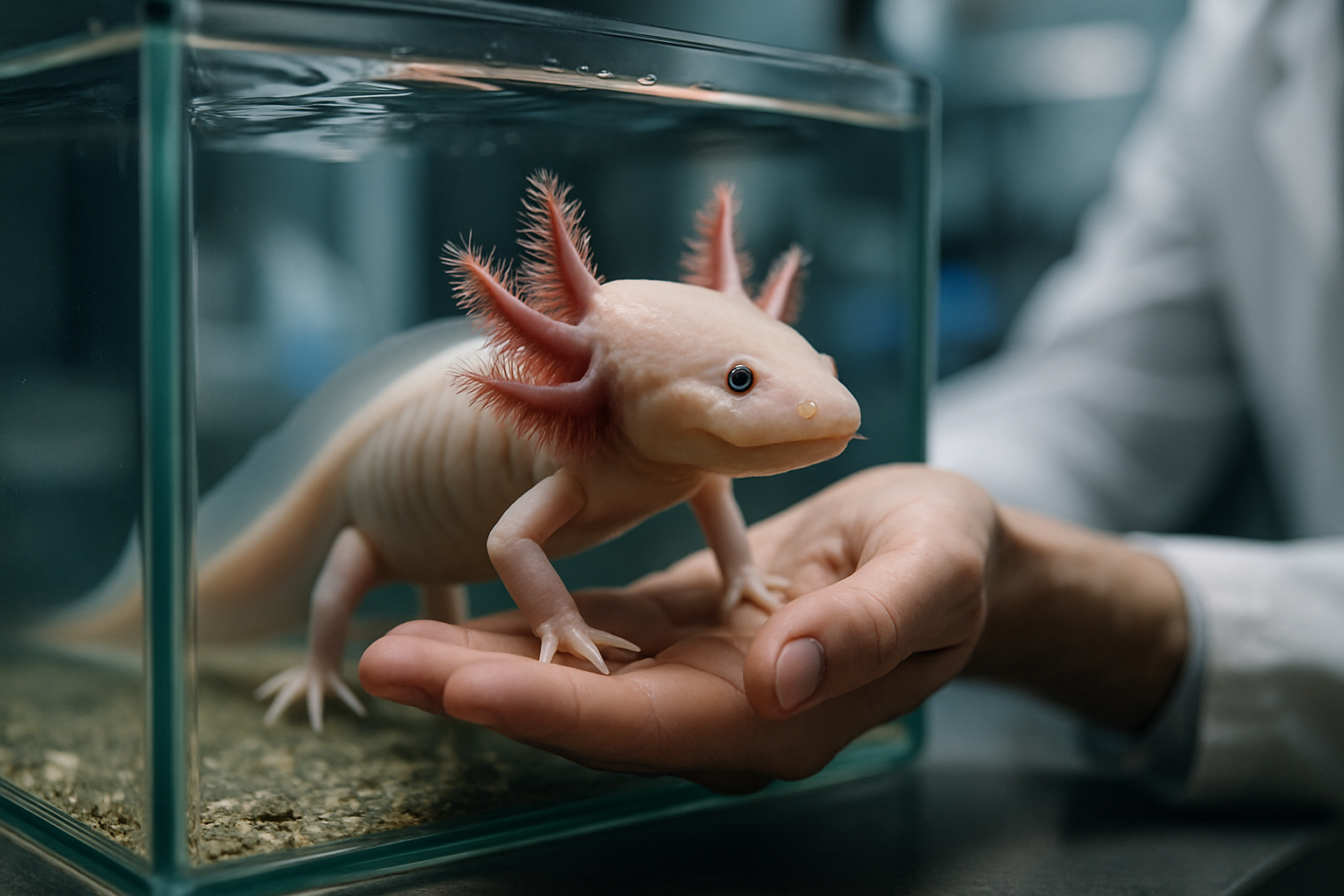The Hidden World of Axolotl Regeneration
Dive into the fascinating realm of axolotls, the salamanders with extraordinary regenerative abilities. These aquatic amphibians captivate scientists and pet enthusiasts alike with their unique appearance and remarkable capacity to regrow lost body parts. From their vibrant feathery gills to their ability to regenerate entire limbs, axolotls offer a glimpse into nature's most astonishing healing mechanisms.

The Axolotl’s Evolutionary Journey
The axolotl’s story begins in the freshwater lakes of Mexico, particularly in the now-diminished Lake Xochimilco. These creatures have evolved over millions of years, adapting to their aquatic environment in ways that set them apart from other salamanders. Unlike most amphibians, axolotls exhibit neoteny, a phenomenon where they retain juvenile features throughout their lives, including their iconic external gills. This adaptation allows them to remain fully aquatic, a trait that has contributed to their survival in their native habitat.
Unraveling the Secrets of Regeneration
At the heart of the axolotl’s fame lies its incredible regenerative capabilities. These amphibians can regrow not just limbs, but also parts of their brain, heart, and other organs. This ability has made them invaluable in the field of regenerative medicine. Scientists have discovered that axolotls possess a unique set of genes and cellular mechanisms that allow for this extraordinary healing. When an axolotl loses a limb, it forms a blastema, a mass of cells that can develop into various types of tissue. This process is orchestrated by a complex interplay of genes and growth factors, which researchers are working to understand and potentially replicate in human medicine.
The Axolotl in Scientific Research
The potential applications of axolotl regeneration research are vast and exciting. Studies on these amphibians have already led to breakthroughs in understanding wound healing and tissue repair. Researchers are exploring ways to apply these insights to human medical treatments, from regenerating damaged heart tissue after a heart attack to repairing spinal cord injuries. The axolotl’s ability to regenerate its brain tissue is particularly intriguing, offering hope for new treatments for neurodegenerative diseases.
Conservation Challenges and Efforts
Despite their importance in scientific research and their popularity as exotic pets, axolotls face significant threats in their natural habitat. Pollution, habitat loss, and the introduction of invasive species have pushed wild axolotls to the brink of extinction. Conservation efforts are underway to protect the remaining wild populations and their habitat. These initiatives include cleaning up Lake Xochimilco, establishing protected breeding areas, and educating local communities about the importance of axolotl conservation. The success of these efforts is crucial not only for the survival of the species but also for the continuation of valuable scientific research.
Axolotls as Exotic Pets
The unique appearance and intriguing abilities of axolotls have made them increasingly popular in the exotic pet trade. Their perpetual smile and feathery gills give them an endearing, almost cartoon-like appearance that appeals to many enthusiasts. However, keeping axolotls as pets requires specific care and considerations. These amphibians need a carefully maintained aquatic environment with cool, clean water and a diet that mimics their natural feeding habits. The cost of setting up and maintaining a proper axolotl habitat can range from $200 to $500, with ongoing expenses for food and water quality management.
The Future of Axolotl Research and Conservation
As we look to the future, the axolotl stands at a crossroads between scientific promise and conservation need. Continued research into their regenerative abilities could lead to groundbreaking medical treatments, potentially transforming human healthcare. At the same time, efforts to protect wild axolotl populations are crucial for maintaining genetic diversity and ensuring the species’ survival. Balancing these needs will require collaboration between scientists, conservationists, and policymakers. The axolotl’s story is far from over, and the coming years may reveal even more secrets about these remarkable creatures and their potential to change the future of medicine and our understanding of regeneration.





